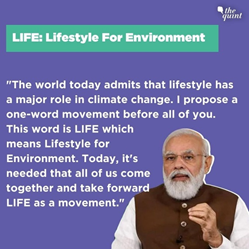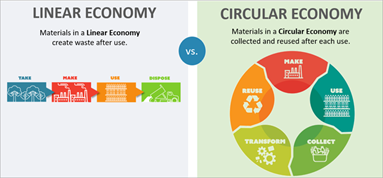

Context
Prime Minister Narendra Modi has launched the 'Lifestyle for the Environment (LiFE) Movement', a global initiative, and asserted that its vision is to live a lifestyle that is in tune with our planet
About
Key points:
- The idea of LiFE was introduced by the Prime Minister during the 26th United Nations Climate Change Conference of the Parties COP-26 in Glasgow last year.
- The idea promotes an environment conscious lifestyle that focuses on mindful and deliberate utilisation instead of mindless and destructive consumption.
- Mission LiFE borrows from the past, operates in the present and focuses on the future.
What is the aim of the LiFE movement?
- The LiFE Movement aims to bring positive change in the environment by collective action.
- It aims to persuade individuals across the world to undertake simple climate-friendly actions in their daily lives or adoption of environment-conscious lifestyle.
- Global leaders have applauded India for focusing on individual behaviour change towards Climate Change
- It also seeks to make the best use of social networks to influence social norms surrounding climate.

What is P3 in LiFE movement?
- The Mission plans to create and nurture a global network of individuals, namely ‘Pro-Planet People’ (P3)
- P3 will have a shared commitment to adopt and promote environmentally friendly lifestyles.
- Through the P3 community, the Mission seeks to create an ecosystem that will reinforce and enable environmentally friendly behaviors to be self-sustainable.
What is one of the most important objectives of LiFE?
- The Mission envisions replacing the prevalent ‘use-and-dispose’ economy with a circular economy.
- ‘Use and dispose’ economy is governed by mindless and destructive consumption whereas circular economy is defined by mindful and deliberate utilization.
- The circular economy is a model of production and consumption, which involves sharing, leasing, reusing, repairing, refurbishing and recycling existing materials and products as long as possible.
- In this way, the life cycle of products is extended. In practice, it implies reducing waste to a minimum.

- In this way, the life cycle of products is extended. In practice, it implies reducing waste to a minimum.


